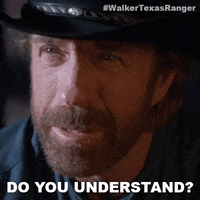- Joined
- Aug 4, 2020
- Messages
- 1,967
- Reaction score
- 3,354

If you are a 'clean' (no substantive adverse history) friendly competent medonc, you can easily find the job I'm referencing. And several others in that ballpark.


The market dynamics in medonc are so different than radonc. They are just totally different phenomenon.I'm not rural, but I know it costs >>>$1.3 million per year to get a locums med onc here.

Medoncs: Rural outpatient job paying north of 1.3m+ no inpatient call 4 day reasonable load work week and plenty of jobs available. But it's horrible.
Radoncs: Sorry, you were saying what again?
I work with some very busy medoncs (no idea how much they are paid, but the key is having an excellent support-pa/np). I know several medoncs who went for the rural 1 mill type of arrangement and arent getting killed. One even refuses to do heme and has some kind of telehealth for pts. After 5 yrs, a good general medonc is really on top of nccn guidelines, toxicities, pathways, drugs for common cancers and probably this part of the job is a lot less formidable. Radoncs do enter practice much more skilled in what they need to do than medoncs.I realize that there's a bit of levity in this post for the sake of the comparison, but it should be made clear to lurkers who are curious about the respective fields that this position is as real as a unicorn.
If there is a job that is paying 1.3m in H/O, it comes with the burden of seeing about 30 pts per day with plenty of night and weekend call and full 5-day weeks.
I was fast in residency. F/u progress notes took about 5 minutes apiece (Epic). Learned how to artfully (in my mind, at least) perform H&P concurrently. Etc. H/O pts are totally different. Imagine having to look up for your follow-up in 2-3 different EMRs (because you will have pts who use different hospitals and it's also dangerous to assume that they didn't stumble into Hospital C's ER for an acute complaint 2 weeks ago) all ER visits, doctor visits, labs, PET results, CT results, and the Doppler US they got 2 weeks ago for leg swelling. Now you have to refer back to an NCCN guideline chart to restage the patient because there's an indeterminate mass in some node whose N classification you can't remember because there are about 50 different staging schemas per NCCN. Now you have to look up the guidelines for recurrent [cancer] for said stage. Consider the toxicities of the Category 1 regimens and think about how to choose the least bad regimen. Then go in to talk to the patient about results, plans, and expected toxicities for the anticipated regimen. Refer back to NCCN guidelines for monitoring recommendations.
Multiply this process give or take by 20 and assume the rest are heme patients, which are frequently more complex than onc patients and very often have more social issues. Early mornings and late evenings are spent writing notes from the day's encounters. That's what a 1.3m/year medical oncologist (there are maybe several hundreds of these in the entire country) is doing to earn that money - being a 16-hour-a-day, >5-day-a-week doctor.
Don't get me wrong. I like medical oncology. But this is not a lifestyle specialty. It will consume your life and alter your personality.
Cool post. But wrong. Rural smart medoncs are crushing it. Believe whatever you want...I realize that there's a bit of levity in this post for the sake of the comparison, but it should be made clear to lurkers who are curious about the respective fields that this position is as real as a unicorn.
If there is a job that is paying 1.3m in H/O, it comes with the burden of seeing about 30 pts per day with plenty of night and weekend call and full 5-day weeks.
I was fast in residency. F/u progress notes took about 5 minutes apiece (Epic). Learned how to artfully (in my mind, at least) perform H&P concurrently. Etc. H/O pts are totally different. Imagine having to look up for your follow-up in 2-3 different EMRs (because you will have pts who use different hospitals and it's also dangerous to assume that they didn't stumble into Hospital C's ER for an acute complaint 2 weeks ago) all ER visits, doctor visits, labs, PET results, CT results, and the Doppler US they got 2 weeks ago for leg swelling. Now you have to refer back to an NCCN guideline chart to restage the patient because there's an indeterminate mass in some node whose N classification you can't remember because there are about 50 different staging schemas per NCCN. Now you have to look up the guidelines for recurrent [cancer] for said stage. Consider the toxicities of the Category 1 regimens and think about how to choose the least bad regimen. Then go in to talk to the patient about results, plans, and expected toxicities for the anticipated regimen. Refer back to NCCN guidelines for monitoring recommendations.
Multiply this process give or take by 20 and assume the rest are heme patients, which are frequently more complex than onc patients and very often have more social issues. Early mornings and late evenings are spent writing notes from the day's encounters. That's what a 1.3m/year medical oncologist (there are maybe several hundreds of these in the entire country) is doing to earn that money - being a 16-hour-a-day, >5-day-a-week doctor.
Don't get me wrong. I like medical oncology. But this is not a lifestyle specialty. It will consume your life and alter your personality.
Cool post. But wrong. Rural smart medoncs are crushing it. Believe whatever you want...
the larger point is that medoncs have good paying jobs in almost any local and a very bright future. Most importantly they are highly valued by hospitals and hard to replace.Why is rural Heme onc being held up as an example of how good Heme/onc is?
I love when someone is confidently wrong. Its like watching people complain about the Bears defense.RadOnc-splaining the economics of medical oncology, gotta love it. Like teaching the PCP about the drug she prescribed daily / weekly.
You’re telling me that medonc that posted is mistaken about their own lived reality ?I love when someone is confidently wrong. Its like watching people complain about the Bears defense.
Great post. My medonc colleagues work hard. (I'm rural but not remote. Not a place where radoncs fly in).I realize that there's a bit of levity in this post for the sake of the comparison, but it should be made clear to lurkers who are curious about the respective fields that this position is as real as a unicorn.
If there is a job that is paying 1.3m in H/O, it comes with the burden of seeing about 30 pts per day with plenty of night and weekend call and full 5-day weeks.
I was fast in residency. F/u progress notes took about 5 minutes apiece (Epic). Learned how to artfully (in my mind, at least) perform H&P concurrently. Etc. H/O pts are totally different. Imagine having to look up for your follow-up in 2-3 different EMRs (because you will have pts who use different hospitals and it's also dangerous to assume that they didn't stumble into Hospital C's ER for an acute complaint 2 weeks ago) all ER visits, doctor visits, labs, PET results, CT results, and the Doppler US they got 2 weeks ago for leg swelling. Now you have to refer back to an NCCN guideline chart to restage the patient because there's an indeterminate mass in some node whose N classification you can't remember because there are about 50 different staging schemas per NCCN. Now you have to look up the guidelines for recurrent [cancer] for said stage. Consider the toxicities of the Category 1 regimens and think about how to choose the least bad regimen. Then go in to talk to the patient about results, plans, and expected toxicities for the anticipated regimen. Refer back to NCCN guidelines for monitoring recommendations.
Multiply this process give or take by 20 and assume the rest are heme patients, which are frequently more complex than onc patients and very often have more social issues. Early mornings and late evenings are spent writing notes from the day's encounters. That's what a 1.3m/year medical oncologist (there are maybe several hundreds of these in the entire country) is doing to earn that money - being a 16-hour-a-day, >5-day-a-week doctor.
Don't get me wrong. I like medical oncology. But this is not a lifestyle specialty. It will consume your life and alter your personality.

Great post. My medonc colleagues work hard. (I'm rural but not remote. Not a place where radoncs fly in).
Serious question/concern: I was surprised by the shear amount of follow-up (and now active treatment) patients filling hemonc schedules. They may have 18-20+ patients per day, but a relatively small fraction of these are new consults. In the setting of targeted therapies and IO of sometimes indefinite duration, these visits are the killer, not the new patient volume, which though substantial, is manageable.
Any recommendations for determining (in a somewhat evidence based way if possible) frequency of f/u or on treatment visits and optimal use of mid-levels regarding such visits.
Feels like community hemonc is drowning in contd. management type visits (often not the highest value if you ask me).
My observation is in the context of serious mid-level support. The docs are still seeing a ton of on treatment and f/u patients.Every medonc I know has at least 1 dedicated midlevel during every day of their clinic time, if not multiple mid levels per doctor.
This is (relatively) rare to see in Radiation Oncology.
No one cares about any of our notes that's for damn sure...Ours who want to be busy do just fine. 1-2 NPs, scribes, etc, etc. Our busiest hasn't dictated a note himself in clinic in years, and his notes even with a scribe are like haikus. No one cares.
Medoncs in my system work 8-5 and see pts 4 days/wk and inpts every 6-8 weeks. all have excellent midlevels who perform all the documentation. Seem to put in 8-9 hrs per day of solid work. earn more than the radoncs here and seem to have a ton of paid speaking opportunities. desirable location and hospitals always seem desperate for more of them. There is a striking difference between their interactions with senior admin and my own.My observation is in the context of serious mid-level support. The docs are still seeing a ton of on treatment and f/u patients.
(Think of the radical change in adjuvant treatment for so many solid tumors as well as increase in OS for stage IV solids over the past 5-10 years). Just eating up medonc appointments.
For those of you who’ve been out in practice for a few years, are you doing anything different now than what you were doing 5 years or so ago? I am doing less things of things (less postop N2 lung, less whole brain, less breast fractions, etc.). That’s different, and all I can think of right now.
Wonder what a med onc would say. Genuinely curious.
To the rad oncs: referring more people for immunotherapy is not an answer I’m going for here
I agree that Medonc follow ups seem like they could or should be complex. Yet I work with some that see 50 follow ups a day! Granted with a mid level or 2I realize that there's a bit of levity in this post for the sake of the comparison, but it should be made clear to lurkers who are curious about the respective fields that this position is as real as a unicorn.
If there is a job that is paying 1.3m in H/O, it comes with the burden of seeing about 30 pts per day with plenty of night and weekend call and full 5-day weeks.
I was fast in residency. F/u progress notes took about 5 minutes apiece (Epic). Learned how to artfully (in my mind, at least) perform H&P concurrently. Etc. H/O pts are totally different. Imagine having to look up for your follow-up in 2-3 different EMRs (because you will have pts who use different hospitals and it's also dangerous to assume that they didn't stumble into Hospital C's ER for an acute complaint 2 weeks ago) all ER visits, doctor visits, labs, PET results, CT results, and the Doppler US they got 2 weeks ago for leg swelling. Now you have to refer back to an NCCN guideline chart to restage the patient because there's an indeterminate mass in some node whose N classification you can't remember because there are about 50 different staging schemas per NCCN. Now you have to look up the guidelines for recurrent [cancer] for said stage. Consider the toxicities of the Category 1 regimens and think about how to choose the least bad regimen. Then go in to talk to the patient about results, plans, and expected toxicities for the anticipated regimen. Refer back to NCCN guidelines for monitoring recommendations.
Multiply this process give or take by 20 and assume the rest are heme patients, which are frequently more complex than onc patients and very often have more social issues. Early mornings and late evenings are spent writing notes from the day's encounters. That's what a 1.3m/year medical oncologist (there are maybe several hundreds of these in the entire country) is doing to earn that money - being a 16-hour-a-day, >5-day-a-week doctor.
Don't get me wrong. I like medical oncology. But this is not a lifestyle specialty. It will consume your life and alter your personality.
Ours stay past one, but admins around here would absolutely supply them with a scribe to feed them grapes. Would probably draw the line at a piss boy, but who knows, i am sure one will try their luck.APBI. SBRT in metastatic patients. Arthritis and plantar fasciitis.
But 5 years ago I was an angry end-of-residency resident seeing prostate follow ups...
I want to tell you all about my systems med oncs but I think you will just get jealous. The other day I walked in to their clinic and a scribe was feeing the guy grapes while he signed chemotherapy orders. He winked at me and said "you should've picked hem/onc".
I wanted to ask him follow up questions but it was already 1PM and way past quitting time for me, so I had to leave.
This is literally my job.Imagine having to look up for your follow-up in 2-3 different EMRs (because you will have pts who use different hospitals and it's also dangerous to assume that they didn't stumble into Hospital C's ER for an acute complaint 2 weeks ago) all ER visits, doctor visits, labs, PET results, CT results, and the Doppler US they got 2 weeks ago for leg swelling. Now you have to refer back to an NCCN guideline chart to restage the patient because there's an indeterminate mass in some node whose N classification you can't remember because there are about 50 different staging schemas per NCCN. Now you have to look up the guidelines for recurrent [cancer] for said stage. Consider the toxicities of the Category 1 regimens and think about how to choose the least bad regimen. Then go in to talk to the patient about results, plans, and expected toxicities for the anticipated regimen. Refer back to NCCN guidelines for monitoring recommendations.
What I envoy abt your situation is the value you bring to the hospital and the fact that they probably think you would be hard to replace. Can’t complain abt my salary, but hospitals I have worked at have absolutely seen me as replaceable and let me know it. You basically experience what is like to be a medonc.This is literally my job.
Except I have 4 EMRs. I have 3 different email addresses, not including my personal email addresses (so, technically 5).
I'm so happy to see this post, actually. Because this illustrates a point I try to make constantly:
There's more variety to physician jobs than people realize.
I know my job is unusual. It became this way because in a rural area, the hospitals my patients go to are either independent (they still exist) or in different networks. My hospital was mismanaged into the ground by the prior administration. I adore the current administration but it's hard for us to undo 20 years of stupidity quickly or safely. My MedOnc colleague (singular) is mediocre on a good day, in terms of skill - and does the work of two doctors. So you can imagine how that goes.
In short: everything that gets missed, I have to catch and fix - because there's no one else.
While I'm technically academic, I get paid like a community doc. It's not the same level of classic private practice/professional services agreement, but it's certainly better than the academic satellite gigs I hear about.
Based on what I've seen and heard from my friends, I'm certain there are RadOncs working harder than me for less money, and MedOncs working less than me for more money.
But I don't know why anyone is on here expressing disbelief about MedOncs making more than a million a year, or assuming that all RadOncs have a "lifestyle" job.
After residency, for the rest of your life, it's just an absolute free-for-all and no actual rules.
This is literally my job.
Except I have 4 EMRs. I have 3 different email addresses, not including my personal email addresses (so, technically 5).
I'm so happy to see this post, actually. Because this illustrates a point I try to make constantly:
There's more variety to physician jobs than people realize.
I know my job is unusual. It became this way because in a rural area, the hospitals my patients go to are either independent (they still exist) or in different networks. My hospital was mismanaged into the ground by the prior administration. I adore the current administration but it's hard for us to undo 20 years of stupidity quickly or safely. My MedOnc colleague (singular) is mediocre on a good day, in terms of skill - and does the work of two doctors. So you can imagine how that goes.
In short: everything that gets missed, I have to catch and fix - because there's no one else.
While I'm technically academic, I get paid like a community doc. It's not the same level of classic private practice/professional services agreement, but it's certainly better than the academic satellite gigs I hear about.
Based on what I've seen and heard from my friends, I'm certain there are RadOncs working harder than me for less money, and MedOncs working less than me for more money.
But I don't know why anyone is on here expressing disbelief about MedOncs making more than a million a year, or assuming that all RadOncs have a "lifestyle" job.
After residency, for the rest of your life, it's just an absolute free-for-all and no actual rules.
I might be the only RadOnc in America able to successfully negotiate a raise <1 year into a gig with the phrase: "I don't know who you're going to find that's both willing and able to do this job".What I envoy abt your situation is the value you bring to the hospital and the fact that they probably think you would be hard to replace. Can’t complain abt my salary, but hospitals I have worked at have absolutely seen me as replaceable and let me know it. You basically experience what is like to be a medonc.
I had one of the executive secretaries follow me down the hallway yesterday to give me lunch, but there were no grapes.Yea but I bet your grape guy is awesome though, right?
I was doing APBI ~6-8y ago at least. Been doing the SBRT for mets since... ~2010? I don't count PF and OAAPBI. SBRT in metastatic patients. Arthritis and plantar fasciitis.
But 5 years ago I was an angry end-of-residency resident seeing prostate follow ups...
I want to tell you all about my systems med oncs but I think you will just get jealous. The other day I walked in to their clinic and a scribe was feeing the guy grapes while he signed chemotherapy orders. He winked at me and said "you should've picked hem/onc".
I wanted to ask him follow up questions but it was already 1PM and way past quitting time for me, so I had to leave.
I might be the only RadOnc in America able to successfully negotiate a raise <1 year into a gig with the phrase: "I don't know who you're going to find that's both willing and able to do this job".

